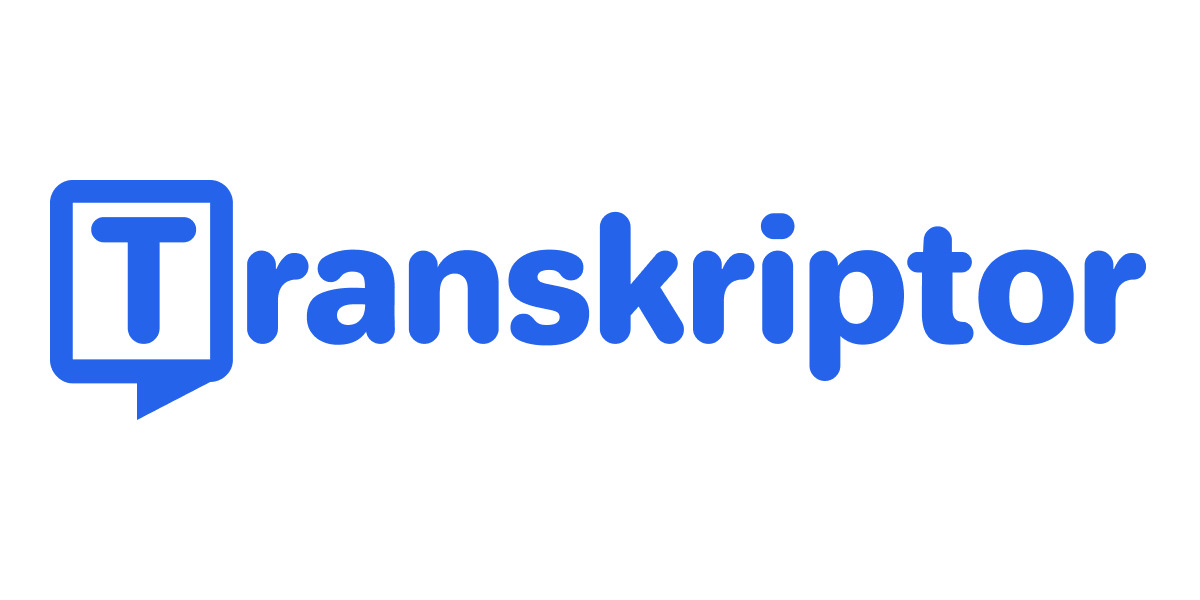Choosing a speech-to-text converter involves evaluating its ability to handle different speech types (accents, noise, and complex vocabulary). Key benefits of selecting a speech-to-text tool include improved productivity, accessibility, and accurate documentation, while limitations include the need for clean audio, language support restrictions, and high processing power. Consider when and where speech-to-text provides the most value, such as for transcription, real-time captioning, or accessibility. Review offline availability for situations with unreliable internet or privacy concerns. Ensure the system meets specific needs (language accuracy and handling industry-specific jargon).
1. Accuracy and Word Error Rate (WER)
Accuracy measures correctly transcribed words, while word error rate (WER) calculates errors (substitutions and deletions). The two are crucial for reliable transcriptions in legal, medical, and customer service fields. Evaluation involves comparing transcribed text to references, considering punctuation, speaker identification, and complex words. Challenges include noise, accents, unclear speech, and complex vocabulary. Best practices include using quality microphones, training on diverse samples, applying noise-canceling technology, and updating models with new terms.
2. Custom Vocabulary Support
Custom vocabulary support allows users to add specific terms or jargon, improving accuracy in specialized fields (medicine, law, and technology). Evaluation involves assessing how well the system integrates new terms and handles pronunciation variations. Challenges include managing custom terms, misidentifications, and system complexity. Best practices include frequent updates, real-world testing, and ensuring diverse training data to cover different pronunciations.
3. Advanced Features
Advanced features in speech-to-text systems include speaker diarization, real-time translation, sentiment analysis, and context-based understanding. These features increase functionality, allowing speaker differentiation and emotional tone interpretation. Evaluation involves assessing accuracy, integration, and performance in various environments. Challenges include maintaining accuracy, increased system demands, and processing delays. Best practices include real-world testing, continuous training, and regular updates to address evolving language trends.
4. Latency and Processing Type
Latency and processing type refer to the delay between speech and transcription, and the method used (real-time or batch). Latency affects user experience, notably in real-time applications like live captions. Evaluation involves assessing transcription speed, accuracy, and balancing performance with processing power. Challenges include managing high latency and optimizing speed and accuracy. Best practices involve utilizing efficient algorithms, optimizing hardware, and balancing processing resources to minimize lags.
5. Deployment Options
Deployment options refer to how speech-to-text systems are implemented (cloud-based, on-premise, or hybrid solutions). The deployment options impact functionality, scalability, and security. Evaluation requires considering cost, security, maintenance, and control. Challenges include balancing cloud flexibility with on-premise control and managing hybrid integration complexities. Best practices include assessing needs, finding the right solution, ensuring data security, and planning for long-term support.
6. Privacy and Compliance
Privacy and compliance involve protecting personal data and ensuring speech-to-text systems meet legal requirements (e.g., GDPR, HIPAA, or CCPA). These factors are essential for user trust and avoiding legal issues. Evaluating privacy involves checking data storage, processing, sharing, and adherence to laws. Challenges include managing security and navigating complex regulations. Best practices include encrypting data, enforcing access controls, auditing compliance, and staying updated on evolving rules.
7. Reliability and Uptime
Reliability and uptime refer to the consistent availability of a speech-to-text system. They are crucial in critical applications where downtime causes errors. Evaluating reliability involves checking outage history, support availability, and handling peak demand. Challenges include maintaining availability during failures and scaling infrastructure. Best practices include using redundant systems, monitoring, quick response teams, and backup solutions to minimize downtime.
8. Developer Experience
Developer experience refers to how easily developers integrate and use a speech-to-text system. It is crucial for efficient development and deployment. Evaluation involves checking documentation, API availability, and integration ease. Challenges include poor documentation and complex setups. Best practices include clear documentation, robust API support, quick responses, and a flexible framework for customization.
9. Cost and Pricing Model
Cost and pricing model refers to how a speech-to-text service charges for its features. It impacts affordability and scalability. Evaluating it involves reviewing pricing tiers, pay-per-use charges, and feature alignment. Challenges include unpredictable costs, especially with pay-as-you-go models. Best practices include choosing a suitable pricing model, monitoring usage, and opting for transparent pricing to avoid unexpected charges.
10. Use Case Fit
Use case fit refers to how well a speech-to-text system meets the specific needs of an application or industry. A tailored system is more efficient and reliable. Evaluating fit involves checking language support, accuracy, real-time processing, and specialized features. Challenges include adapting to unique requirements, balancing customization, and handling varied environments. Best practices include defining requirements, selecting a scalable system, and testing in real-world scenarios.
How to Use Speech-to-Text Converter?
To use a speech-to-text converter, follow these 10 steps:
- Choose a platform – Select a suitable speech-to-text service or application.
- Set up an account – Register or sign in, if required.
- Install or access the tool – Download the application or use it online.
- Check hardware – Ensure your microphone or recording device is working properly.
- Adjust audio settings – Configure input volume, noise suppression, and language preferences.
- Upload or stream audio – Provide the audio file or start real-time capture.
- Start transcription – Activate the transcription feature.
- Review and edit output – Check and correct the generated text.
- Save or export results – Store or export the transcription.
- Integrate with other tools – Connect the output to other applications as needed.
How does Speech-to-Text Converter Handle Different Accents?
A speech-to-text converter adapts to different accents using diverse training datasets and models trained on regional and non-native accents. Modern systems reduce errors with acoustic modeling, phoneme mapping, and language model adaptation. Custom vocabulary and speaker adaptation fine-tune recognition for specific industries. Machine learning advancements enable accent-specific models for improved accuracy, while continuous updates expand accent coverage and improve real-time recognition.
What Languages are Supported by the Speech-to-Text Converter?
A speech-to-text converter supports major languages (e.g., English, Spanish, French, German, Mandarin, Japanese, Russian, and Arabic) with regional variants (e.g., British English, American English, and Latin American Spanish) for improved accuracy. Some platforms cover Portuguese, Italian, Korean, and Hindi, with varying performance. Incorporating dialects and less familiar languages depends on training dataset quality, market demand, and the provider's investment in language models. An online audio translator integrates speech-to-text to transcribe and translate speech, making multilingual communication more efficient.
Can a Speech-to-Text Converter Adapt to Noisy Environments?
Yes, some speech-to-text converters adapt to noisy environments using advanced noise reduction and audio preprocessing techniques. Background noise — common in call centers or outdoor settings — affects transcription accuracy if not filtered. Hardware solutions (e.g., directional microphones, noise-canceling circuits), and software enhancements (e.g., spectral subtraction and machine learning-based denoising) help improve speech clarity. Real-time audio filtering removes unwanted noise before transcription. Adaptive algorithms adjust to changing sound conditions, maintaining better accuracy in dynamic environments.
What are the Advantages of a Speech-to-Text Converter?
The advantages of a speech-to-text converter include:
- Time efficiency – Converts speech to text faster than manual typing.
- Improved accessibility – Provides real-time captions for individuals with hearing impairments.
- Improved productivity – Allows hands-free operation and multitasking.
- Accurate documentation – Makes recorded speech searchable and easily stored.
- Multilingual support – Transcribes and translates multiple languages.
- Cost reduction – Reduces reliance on human transcription services.
- Integration capability – Connects with various applications via APIs and software integrations.
-
Consistency in output – Ensures standardized transcription formatting and style.
When to Use a Speech-to-Text Converter?
Use a speech-to-text converter to transform spoken language into written text for efficiency, accessibility, or documentation. Businesses use it for meeting transcripts, interviews, and customer service records. Content creators rely on it for converting podcasts, lectures, and videos into scripts. Accessibility services provide real-time captions for hearing-impaired individuals. Legal, medical, and academic sectors use it to document proceedings and research. Productivity tools integrate it for note-taking, voice commands, and hands-free operation, saving time and reducing typing effort.
What are the Challenges of a Speech-to-Text Converter?
The challenges of a speech-to-text converter include:
- Background noise – Interferes with distinguishing speech from other sounds.
- Accents and dialects – Variations in pronunciation reduce accuracy.
- Speech clarity – Slurred or rapid speech decreases transcription precision.
- Technical vocabulary – Errors occur with specialized terms lacking domain training.
- Language support – Limited language coverage restricts multilingual use.
- Punctuation and formatting – Inconsistent automatic punctuation and formatting.
- Speaker diarization – Difficulty differentiating between multiple speakers.
- Real-time processing – Requires significant computational resources for accuracy.
- Data privacy – Potential security and confidentiality risks with cloud services.
- Hardware limitations – Insufficient processing power affects offline performance.
Does a Speech-to-Text Converter Support Offline Operation?
Yes, some speech-to-text converters support offline operation with models like OpenAI Whisper and Mozilla DeepSpeech. Online services such as Google Cloud Speech-to-Text and Amazon Transcribe require internet access. Hybrid systems combine offline transcription with optional cloud improvements. Offline operation offers privacy and eliminates latency but requires significant computing power and has lower accuracy. Online services provide better scalability and faster processing, but depend on a stable internet connection.
Can I use the Speech-to-Text Engine for Free?
Yes, you can use the speech-to-text engine for free.
About Transkriptor
Transkriptor is an AI-powered speech-to-text and productivity platform designed to help users save time and work more efficiently. With its advanced transcription and AI note-taking capabilities, Transkriptor makes it easy to transcribe meetings, convert voice notes and memos into text, and transform video content into written notes. By combining powerful AI features with speed and convenience, Transkriptor delivers a seamless solution for professionals, students, and teams worldwide. For more information, visit transkriptor.com.
Media Contact
Customer Contact
customer@transkriptor.com


